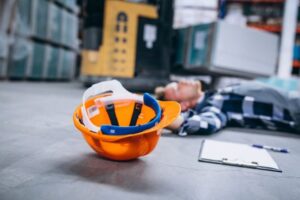What if the difference between a dream ride and a miserable slog isn’t your fitness, but what you pack—and what you leave behind?
This guide helps you pack right for U.S. bike trips. You’ll learn about bikepacking essentials and smart packing tips. We’ve tested cycling travel accessories across the country.
We’ve gathered advice from top brands like REI Co-op and Ortlieb. You’ll create a lean bikepacking checklist. You’ll also learn how to choose the right gear and stay safe with the right cycling helmet and lights.
Next, we’ll show you how to plan routes and protect your electronics. You’ll learn to balance weight and comfort. And how to pack a compact sleep system for mixed terrain. Start light. Pack smart. Ride farther.

Image Source: BikesOnline
Key Takeaways
- Pack only what earns its place; every ounce should serve a clear purpose.
- Use a bikepacking checklist to avoid last-minute scrambles and missed items.
- Match bicycle touring gear to terrain and trip length for safer, smoother rides.
- Prioritize fit and ventilation when choosing cycling helmets for long hours.
- Adopt lightweight bikepacking habits to improve handling and reduce fatigue.
- Protect maps and devices with sealed bags and reliable mounts.
- Test your load on short S. bike trips before committing to multi-day routes.
How to Plan Your Bike Trip for Success
Planning a bike route is key to a great trip. Begin with a clear goal and map out your days. Make sure to include some flexibility. Always think about safety from start to finish.
Route research and terrain considerations
Start with Adventure Cycling Association maps and Bikepacking.com guides. Also, check state park pages for rules. Use Trailforks and Strava to see trail popularity and conditions.
Choose the right gear for the terrain. For gravel, pick tires between 38–50 mm and lower gears. On Forest Service or Bureau of Land Management roads, look up closures and water points.
Weather checks and seasonal packing tweaks
Check NOAA forecasts and climate normals a week ahead and the night before. Mountain and desert areas can drop 30–40°F quickly. Pack clothes that can adapt to changing weather.
In the Southwest summer, carry 3–5 liters of water and wear UPF apparel with SPF 30+ sunscreen. For winter or shoulder seasons, add layers, a waterproof shell, and extra warmth for sleep.
Balancing weight, comfort, and safety
Set a base weight that suits your route and fitness. Many kits weigh 20–30 lb, while ultralight options are 10–20 lb. Keep heavy items in a frame bag and light ones in handlebar and saddle bags.
Don’t skip essentials like a CPSC-certified helmet, lights, first-aid, and backup navigation. Plan for 30–70 mile days and share your route. This ensures comfort and safety in every decision.
Packing Tips & Accessories for Cycling Travelers
Choosing the right luggage makes your journey smoother. Aim for a minimalist approach that balances weight and comfort. A detailed bikepacking checklist helps you pack efficiently and place gear correctly.
Creating a prioritized packing checklist
Organize your gear into essential and nice-to-have categories. Start with must-haves like a cycling helmet, lights, tools, and a first-aid kit. Don’t forget a hydration system, navigation tools, and a shelter if you plan to camp.
Add comforts like a camp pillow or extra camera gear if space permits. Remember to include trip-specific items like a bear canister or a water filter. Weigh and measure each item to maintain a balanced load.
Choosing bike bags: frame, saddle, handlebar, and panniers
Select bike bags that fit your needs and route. Frame bags are great for carrying tools and snacks. Saddle bags are perfect for soft items like clothes and quilts.
Handlebar rolls are ideal for sleeping bags and pads. Fork cages hold dry bags or bottles securely. For long paved routes, consider using panniers for balance.
Space-saving hacks for clothes and gear
Use ultralight dry bags for insulation and then compress your gear. Roll clothes to save space and tuck socks in shoes. Packing cubes help you find what you need quickly.
Decant liquids into small bottles and use solid toiletries to avoid leaks. Store electronics and cables in a labeled pouch. Keep rain gear and snacks accessible for easy use.
| Carry Zone | Best For | Example Gear | Why It Works |
| Frame bag | Dense, heavy items | Water bladder, tools, food | Low center of gravity; stable handling on climbs and descents |
| Saddle bag | Soft, compressible items | Clothing, quilt, puffy jacket | Keeps bulk off the bars; add anti-sway for control |
| Handlebar roll | Long, light items | Sleeping bag, pad | Even tube shape packs tight; spacers clear cables |
| Fork cages | Modular bottles/dry bags | 1–3L dry bags, extra water | Moves weight forward; easy to remove at camp |
| Top-tube/stem bags | Quick-access essentials | Snacks, rain mitts, sunscreen | No stop required; improves on-the-go fueling |
| Panniers (rear/front) | High-volume touring | Ortlieb Back-Roller Classic, front panniers | Waterproof capacity; balances loads on long paved routes |
| Organization aids | Order and compression | Compression packing, packing cubes for cyclists | Faster camp setup; easier daily repacks |
Essential Safety Gear, Including Cycling Helmets
Safe miles start with the right gear. Make sure it fits, shines, and keeps thieves away. The best mix of helmets, lights, and locks makes your trip confident.
How to choose cycling helmets for fit and ventilation
Choose helmets that are CPSC-certified. Look for brands like Giro, Specialized, Bontrager, POC, or Smith. A MIPS helmet adds extra protection without adding weight.
Start by measuring your head. Try the helmet with a thin cap, two fingers above your brows. Adjust the straps until it’s snug. The straps should form a neat “V” under your ears.
In hot weather, choose helmets with big vents and pads that wick away moisture. For bug season, add a removable bug net.
High-visibility apparel and lighting setups
High-vis gear makes you stand out in traffic. Wear fluorescent jerseys and reflective pieces from Proviz or Showers Pass.
Always use bike lights. Daytime running lights like Bontrager Flare RT or Cygolite Hotshot keep you visible. At night, add a 500–1,000 lumen light from Lezyne or NiteRider.
For full visibility, add reflective tape to your bike. It’s easy to apply and very visible.
Bike locks, trackers, and anti-theft strategies
For quick trips, use a hardened U-lock like Kryptonite New-U or ABUS Granit. Add a cable to secure wheels and saddle rails.
At camp, use a lightweight cable to secure your bike. A small alarmed lock can deter thieves.
Trackers help recover your bike. An Apple AirTag bike mount is discreet. Garmin Edge Incident Detection and Quad Lock tracker cases offer extra security. Record serial numbers, take photos, and park in busy spots. A simple tarp can hide your bike from view.
Tools and Repair Kits You Shouldn’t Skip
A compact kit keeps rides on track. Start with a quality bike multi-tool that covers 2–8 mm hex, T25 Torx, and Phillips/flat drivers. Durable picks like Lezyne and the Crankbrothers M19 also add a chain tool. This helps with trailside fixes and a fast chain quick link swap.
Flats happen, so carry two tire levers, spare tubes for each wheel size, and a patch kit with glueless options. For tubeless setups, pack tire plugs and a dedicated tubeless repair tool like Dynaplug or Lezyne. These tools seal punctures quickly.
Inflation matters when time is tight. A reliable mini pump like the Topeak Road Morph or Lezyne Micro Floor Drive works anywhere. A pocket CO2 inflator speeds bead reseats and quick road fixes. Keep both for flexibility on remote stretches.
Small parts can save a day. Bring a frame-specific derailleur hanger, plus brake pads for long, wet, or steep routes. Add a microfiber rag, a tiny bottle of lube, zip ties, electrical tape, and a short wrap of duct tape around your pump for tidy carry.
Round it out with spare bolts for cages and racks, a spoke key, and—on extended tours—spare spokes if your wheels allow and a dab of threadlocker. Before you roll, check torque with a wrench and refresh tubeless sealant. This way, your kit can do its job when it counts.
Clothing Systems for All-Weather Riding
Start with smart packing by choosing cycling layers that handle sweat, wind, and rain. Look for pieces that are both comfortable and quick to dry. This way, you can ride hard and recover fast at camp.
Layering basics: base, mid, and shell
Start with a merino base layer from Smartwool or a Patagonia Capilene top for wicking. Merino controls odor, while Capilene dries fast. Pair either with quality bib shorts and a supportive chamois from Pearl Izumi or Rapha.
Add a synthetic midlayer like a light thermal jersey or fleece. Pieces using Polartec Alpha or the Patagonia R1 keep you warm without being heavy. Finish with breathable shells that let air in on climbs but keep out the chill on descents.
Don’t forget arm and leg warmers for swing seasons. This modular setup lets you adjust comfort from dawn to dusk.
Rain protection and windproof options
Pack a waterproof cycling jacket with a 10k–20k rating, taped seams, a drop tail, and pit zips. Models from GOREWEAR or Castelli offer great weather defense and airflow. Add waterproof gloves or overmitts and sealed shoe covers for full coverage.
A packable wind vest or an ultralight jacket in Pertex or GORE-TEX Infinium is great for long descents. For extended storms, carry a rain kilt or ultralight pants to keep your shorts and layers dry.
Packing quick-dry and odor-resistant fabrics
Choose quick-dry apparel and anti-odor fabrics to keep your gear fresh. Merino and technical synthetics outperform cotton, especially on long tours. Rotate two pairs of cycling socks daily and clip the drying pair to your bags as you ride.
For camp, a compact insulated jacket—ThermoBall or a Patagonia Micro Puff—adds warmth without bulk. Don’t forget sun-ready add-ons like UV sleeves, a brimmed cap under the helmet, and polarized sunglasses.
| Layer | Best Use | Recommended Fabrics/Tech | Key Features | Brands/Examples |
| Base | Sweat management | Merino, Capilene | Moisture wicking, odor control | Smartwool, Patagonia Capilene |
| Mid | Light insulation | Polartec Alpha, R1 fleece | Breathable warmth, fast dry | Patagonia R1, thermal jersey |
| Shell | Wind and rain | Breathable shells | Pit zips, drop tail, 10k–20k | GOREWEAR, Castelli |
| Wind Layer | Descents, variable temps | Pertex, GORE-TEX Infinium | Packable, gust blocking | Wind vest, ultralight jacket |
| Rain Gear | Prolonged storms | Waterproof fabrics | Sealed seams, coverage | Waterproof cycling jacket, rain kilt |
| Accessories | Comfort and safety | Quick-dry apparel, anti-odor fabrics | Sun and hand/foot protection | UV sleeves, shoe covers, gloves |
Hydration, Nutrition, and On-the-Go Cooking
Plan your hydration strategy for cycling in hot and high-altitude areas. On hot U.S. routes, drink 0.5–1 liter per hour. For desert stretches, drink more. Use frame bottles, fork-mounted bottles, and a 2–3L bladder in your frame bag.
Keep electrolyte tablets like Nuun or Skratch Labs handy. They replace sodium and potassium during long climbs and headwinds.
When water sources are uncertain, use water filter bikepacking practices. Treat streams and cattle tanks with a squeeze filter like the Sawyer Squeeze or Katadyn BeFree. Carry Aquamira drops as a backup for freezing temps or clogging. Refill at gas stations and trailheads whenever possible, and mark reliable taps on your map.
Eat 200–300 calories per hour to fuel steady output. Mix quick carbs and fats: energy chews, tortillas, peanut butter, jerky, and trail mix. They ride well and resist crushing. For multi-day pushes, resupply at small-town groceries and choose dense items that won’t crumble in a frame bag. Rotate flavors to avoid palate fatigue and keep morale high.
For hot drinks and camp meals, a compact stove streamlines your stop. An isobutane canister stove like the MSR PocketRocket or Soto WindMaster boils fast and packs tiny. An alcohol stove suits ultralight riders who value silent simmering, though it’s slower. Carry a light pot, a windscreen, and a long-handled spoon to reach deep meal pouches without mess.
In dry seasons, local rules may limit flames, so verify what’s legal before you spark up. Follow bear canister rules in grizzly country; approved containers such as BearVault keep food secure. Cook and stash food at least 200 feet from your tent, and pack out every scrap, including microtrash and empty fuel canisters where recycling exists.
| Need | Go-To Options | Pros | Watch Outs |
| Hydration strategy cycling | Frame/fork bottles + 2–3L bladder | Scales to desert miles; easy sip access | Bladders can puncture; manage hose routing |
| Electrolyte tablets | Nuun, Skratch Labs | Replaces sodium/potassium; light to carry | Flavor fatigue; mind sugar content |
| Water filter bikepacking | Squeeze filter (Sawyer Squeeze, Katadyn BeFree) | Fast flow; threads to bottles | Can freeze/clog; carry chemical backup |
| Camp meals | Dehydrated pouches, ramen, instant oats | Quick prep; reliable calories | Packaging waste; sodium can run high |
| Compact stove choice | Isobutane canister stove | Rapid boil; precise control | Fuel availability varies by town |
| Ultralight heat source | Alcohol stove | Silent; simple and cheap fuel | Slower boil; not always legal in fire bans |
| Food storage in bear zones | Bear canister rules (BearVault), hang/ursack where allowed | Protects wildlife and gear | Added bulk; check park-specific requirements |
Navigation, Tech, and Power Management
Smart planning is key when maps and batteries run out. Choose a reliable GPS head unit and have backup plans. Make sure your power needs match your route and the weather.
Secure your gear and protect your phone. Keep cables organized to avoid them coming loose on bumpy roads.
GPS devices, offline maps, and route apps
Garmin Edge and Wahoo ELEMNT are great for long rides. They have long battery life, clear screens, and alert you to crashes. Load routes from Ride with GPS, Komoot, or Strava for easy navigation.
Have a backup plan. Save offline maps in Google Maps and Gaia GPS. Carry a paper map in a zip bag for emergencies. Lower the screen brightness and pause it when not in use to save battery.
Power banks, dynamo hubs, and solar panels
A 10,000–20,000 mAh USB power bank from Anker can charge two to five devices. For long trips, a SON dynamo or Shimano hub with a Sinewave Revolution can charge you as you ride.
In sunny areas, a Goal Zero solar panel like the Nomad 10, or an Anker 21W, can charge at camp. Solar charging is slow, but it’s a good supplement to dynamo and bank charging.
Mounts, phone protection, and cable organization
Use a Quad Lock mount or SP Connect for stable phone viewing. Put your phone in a waterproof case and add a lanyard for safety.
Store cables in a small pouch and label them. Carry a small dual-port charger for quick charges. Turn off devices when not in use to save your power bank for the end of your ride.
Comfort and Overnight Essentials
Long rides feel better with easy camping and deep sleep. Pack light, stay dry, and plan for the coldest night. Small choices in fit, fabric, and foam help avoid aches and improve tomorrow’s ride.
Lightweight shelters and sleep systems
Choose a shelter that fits your terrain and privacy needs. A freestanding ultralight tent like the Big Agnes Copper Spur Bikepack works well on rocky ground. For calm, dry areas, a tarp or bivy sack is lighter and fits in tight spots.
Match your sleeping quilt or bag to the expected low temperature with a 10°F buffer. Use an insulated pad and check the sleeping pad R-value. R 3–5 is good for shoulder seasons, while lower ratings are for warm summers. Carry a compact camp pillow or a softshell if you’re watching grams.
Keep sleep gear in dry bags. Moisture can make things cold and uncomfortable, so keep your quilt and clothes dry before sleeping.
Compact toiletries and first-aid must-haves
Streamline your travel toiletries: use a folding toothbrush, fluoride toothpaste tabs, biodegradable soap, and more. These items are light but cover your daily needs.
Build a cycling first-aid kit with essentials like bandages and antiseptic wipes. Don’t forget a whistle and a compact emergency blanket for unexpected nights.
In tick country, carry fine-tipped tweezers and wear permethrin-treated layers. Store your meds in a cool, easy-to-reach spot.
Saddle comfort: shorts, chamois cream, and bike fit
Start with premium bibs or shorts and switch them on long tours. Use chamois cream from brands like Chamois Butt’r to reduce friction and prevent saddle sores. Change into dry shorts at camp to help your skin recover.
Adjust your bike fit before you leave: saddle height, setback, and bar reach should match your riding style. A professional bike fit can prevent discomfort and numb hands.
Test saddles designed for long rides before you go. Brands like Brooks, Selle Anatomica, and Specialized Power are popular. Small adjustments can make a big difference in comfort.
| Item | Why It Matters | Pro Tip |
| Ultralight tent or bivy sack | Balances weather protection with packable weight | Pick freestanding for rocky ground; bivy for stealth sites |
| Sleeping quilt + sleeping pad R-value | Warmth depends on insulation and ground rating | Target a 10°F buffer; aim R 3–5 for shoulder seasons |
| Camp pillow | Neck support boosts sleep quality | Use an inflatable or a clothing-stuffed sack to save space |
| Travel toiletries | Hygiene and skin care with minimal weight | Pack tabs and decants; choose quick-dry towel |
| Cycling first-aid kit | Treats scrapes, blisters, and allergic reactions | Include hydrocolloids, meds, and a compact emergency blanket |
| Chamois cream | Reduces friction to prevent saddle sores | Reapply on humid days; change out of wet shorts fast |
| Bike fit and saddle choice | Proper alignment prevents pain and numbness | Set height and reach; test Brooks, Selle Anatomica, or Specialized Power |
Conclusion
Starting a bike trip across the U.S. needs clear goals and a good plan. Use a checklist for route, weather, and gear. Always remember to stay safe with the right helmet, lights, and repair kit.
Choose clothes that dry fast and don’t smell. Also, pack for rain and wind. This way, you’re ready for any weather.
Choose the right bags for your bike. Put heavy things low and in the middle. This helps your bike handle better.
For staying hydrated, carry enough water and a way to treat it. Pack food that’s high in calories but small. A lightweight stove is great for hot meals on long rides.
Keep your way straight with maps, GPS, and a cue sheet. A charged power bank and a dynamo hub or solar panel keep your devices running. Don’t forget a good shelter and sleep setup.
Remember, a well-packed bike is key to a great trip. Mix safety, nutrition, and smart gear choices. When your gear fits your trip, you’ll ride farther and happier.
FAQ
How do I research routes and terrain for a multi-day bike trip in the U.S.?
Start with Adventure Cycling Association maps and Bikepacking.com routes. Also, check state park websites for surface type and camping rules. Use Strava Global Heatmap and Trailforks for route popularity and technical sections.
Review National Forest Service and Bureau of Land Management pages for road access and closures. Choose tire width and gearing based on the route. Gravel often needs 38–50 mm tires and lower gearing.
What weather checks should I do and how should I tweak my packing by season?
Use NOAA forecasts and regional climate normals. In the Rockies and Sierra, temperatures can swing 30–40°F in a day. For hot Southwest rides, carry 3–5 liters of water and wear UPF apparel with SPF 30+ sunscreen. In winter or shoulder seasons, add layered insulation and a waterproof shell rated 10,000–20,000 mm. Also, bring extra sleep warmth.
How do I balance weight, comfort, and safety on tour?
Set a realistic base weight: 20–30 lb for touring, 10–20 lb for ultralight bikepacking. Keep dense items low and centered in a frame bag. Use handlebar or saddle bags for lighter items. Never skip core safety: a CPSC-certified cycling helmet, front and rear lights, first-aid, and backup navigation. Plan bailout points and share your route and check-in schedule.
What belongs on a prioritized packing checklist?
Must-haves include a helmet, lights, tools and repair kit, first-aid, hydration system, navigation, and shelter/sleep system for overnights. Nice-to-haves are a camp pillow, camp shoes, and extra camera gear.Trip-dependent items are a bear canister where required, water filter in backcountry, and microspikes for icy hike-a-bike. Weigh items and note volume to avoid overpacking.
Which bike bags should I choose—frame, saddle, handlebar, or panniers?
Frame bags from Revelate Designs, Apidura, or Rogue Panda centralize weight and fit bladders, tools, and food. Saddle bags like the Ortlieb Seat-Pack or Arkel are great for clothing and quilts; use anti-sway hardware.Handlebar rolls (Revelate Sweetroll, Apidura Handlebar Pack) carry sleeping bags and pads. Fork cages (Salsa Anything Cage, Topeak VersaCage) add bottle or dry bag capacity. For rack touring, Ortlieb Back-Roller Classic panniers are durable and waterproof; add front panniers for balance.
What are the best space-saving hacks for clothes and gear?
Use 5–8L ultralight dry bags like Sea to Summit eVac with compression for insulation. Roll clothing, tuck socks in shoes, and decant liquids into 10–30 ml bottles. Choose solid toiletries to cut bulk.Nest your stove inside the pot with lighter, windscreen, and fuel. Color-code and label pouches, and keep rain gear and snacks in top-tube or stem bags for quick access.
How do I choose a cycling helmet with the right fit and ventilation?
In the U.S., look for CPSC certification. Many helmets from Giro, Specialized, Bontrager, POC, and Smith offer MIPS or similar systems and adjustable retention dials like BOA. Measure your head, try with a thin cap, set the helmet level two fingers above your eyebrows, and form a V under each ear with the straps. Large vents and moisture-wicking pads help in hot climates; bug nets are useful in the Midwest and Southeast.
What high-visibility clothing and lights do I need for safety?
Wear fluorescent vests or jerseys and reflective accents from brands like Proviz and Showers Pass. Run daytime front and rear lights—examples include Bontrager Flare RT or Cygolite Hotshot for the rear and a 500–1,000 lumen front light from Lezyne or NiteRider. Use both steady and flash modes and add side visibility. Reflective tape on cranks and bags improves 360° conspicuity.
How can I secure my bike in towns and at camp?
Use a hardened U-lock like the Kryptonite New-U or ABUS Granit, and loop a cable through wheels. At camp, a lightweight cable to a fixed object deters quick grabs. Covert trackers such as an Apple AirTag in a saddle mount help recovery; also capture serial numbers and photos. Park in visible, well-lit areas, cover the bike with a tarp, and consider a small alarmed lock for quick stops.
What tools and repair kit are essential for bikepacking?
Pack a quality multi-tool with 2–8 mm hex, T25 Torx, and screwdrivers (Lezyne or Crankbrothers M19). Add a chain breaker, spare quick links (SRAM PowerLink, Shimano Quick-Link), two tire levers, glueless patches, a spare tube per wheel size, and tubeless plugs like Dynaplug.Bring a mini pump (Topeak Road Morph, Lezyne Micro Floor Drive) and optional CO2. Include a spare derailleur hanger, disc brake pads, chain lube, a microfiber rag, zip ties, electrical and duct tape, and a few spare bolts. For longer trips, add a spoke key, spare spokes if compatible, and threadlocker.
What clothing system works for all-weather riding?
Use a moisture-wicking base layer (merino from Smartwool or synthetic like Patagonia Capilene), a light midlayer such as Polartec Alpha, and a breathable shell. Choose bib shorts with a quality chamois from Pearl Izumi or Rapha, and carry arm and leg warmers.For rain and wind, bring a 10k–20k waterproof jacket with venting, gloves or overmitts, shoe covers (GOREWEAR, Castelli), and a packable wind vest or GORE-TEX Infinium jacket.
Which fabrics are best for quick-dry and odor control?
Prioritize merino wool and technical synthetics; skip cotton. Carry two pairs of cycling socks and rotate daily, drying one pair on your bags with mini clips. For camp warmth, a lightweight down or synthetic jacket such as Patagonia Micro Puff compresses well in a dry bag.Add UV sleeves, a brimmed cap under the helmet, and polarized sunglasses for sun protection.
How much water and food should I plan for, and how do I treat water?
Plan 0.5–1 liter of water per hour in heat, more in deserts. Expand capacity with frame bottles, fork-mounted bottles, and a 2–3L bladder. Replace electrolytes with Nuun or Skratch Labs. Treat natural sources using a Sawyer Squeeze or Katadyn BeFree and carry Aquamira drops as backup.
What cooking setup works best on the road?
A compact canister stove like the MSR PocketRocket or Soto WindMaster boils fast and packs small. Bring a lightweight pot, windscreen, and long-handled spoon. In fire-restricted areas, stoves may be the only legal option—check local rules.Store food in a BearVault canister where required, or use an Ursack or proper bear hang where allowed. Cook and store food at least 200 feet from your tent and pack out all trash.
Which GPS devices and apps are reliable for navigation?
Garmin Edge and Wahoo ELEMNT head units offer long battery life, turn-by-turn directions, and incident detection. Preload routes from Ride with GPS, Komoot, and Strava. Download offline maps in Google Maps or Gaia GPS as a backup. Paper maps still matter in remote regions with limited cell service.
How do I keep devices charged—power banks, dynamos, or solar?
Carry a 10,000–20,000 mAh power bank from Anker for 2–5 charges. For long trips, pair a dynamo hub like SON Delux or Shimano with a Sinewave Revolution USB converter to charge while riding. Solar panels such as Goal Zero Nomad 10 or Anker 21W work best at camp in sunny areas. Save battery with airplane mode and lower screen brightness.
What mounts and protection should I use for my phone and electronics?
Use sturdy mounts from Quad Lock or SP Connect and a weatherproof case or sleeve. Add a short lanyard for security on rough trails. Organize cables by type—USB-C, Lightning, and Micro-USB—in a labeled pouch, and bring a dual-port wall charger for faster top-ups at cafes or motels.
What sleep system should I pack for overnight comfort?
Choose a shelter that fits your conditions: freestanding tent like Big Agnes Copper Spur Bikepack, non-freestanding tent, tarp, or bivy. Match your bag or quilt rating to expected lows with a 10°F safety margin, and use an insulated pad with the right R-value (R 3–5 for shoulder seasons).Pack a compact pillow or use a stuff sack with clothes, and keep sleep gear in separate dry bags.
What toiletries and first-aid items are must-haves?
Bring toothbrush, fluoride toothpaste tabs, biodegradable soap, SPF 30+ sunscreen, lip balm, hand sanitizer, and a quick-dry microfiber towel. First-aid should include adhesive bandages, hydrocolloid blister pads, gauze, tape, antiseptic wipes, tweezers, ibuprofen or acetaminophen, antihistamines, and prescriptions. Add an emergency blanket, whistle, and fine-tipped tweezers for tick removal in endemic areas.
How do I prevent saddle soreness and improve comfort on long days?
Invest in well-fitting bibs or shorts and rotate pairs on longer trips. Apply chamois cream like Chamois Butt’r or Assos to reduce friction, and change out of damp shorts at camp. Fine-tune bike fit—saddle height, setback, and reach—ideally with a professional fit. Consider long-distance-friendly saddles from Brooks, Selle Anatomica, or Specialized Power, and test well before departure.
Any final packing tips to avoid overloading the bike?
Weigh every item and track volume. Keep heavy gear low and centered in the frame bag, and stash frequently used items—rain jacket, snacks, tools—within quick reach. Use redundancy where it matters (navigation and lights) but trim duplicates elsewhere. Do a shakeout ride with full kit and adjust before the big trip.






